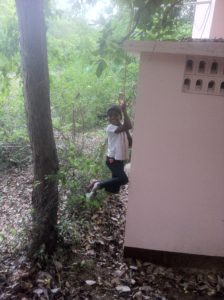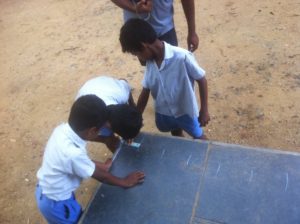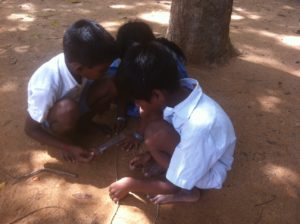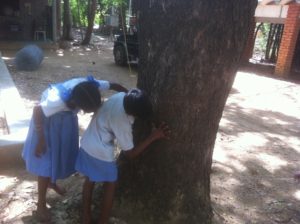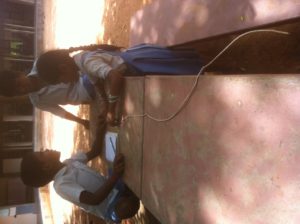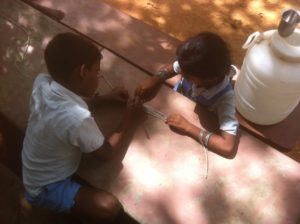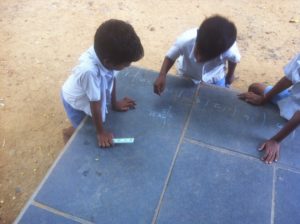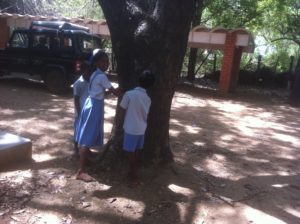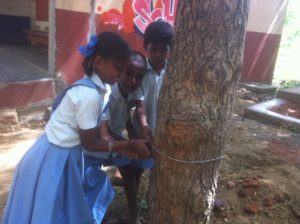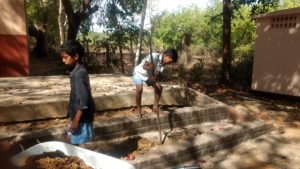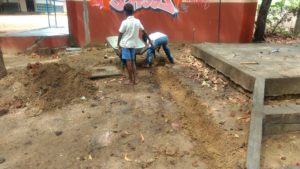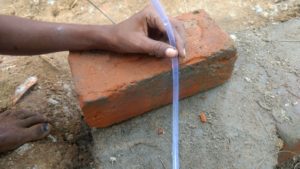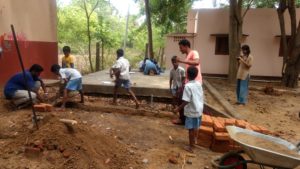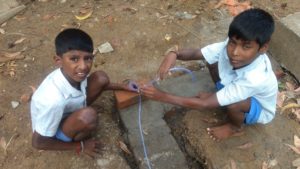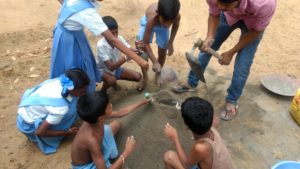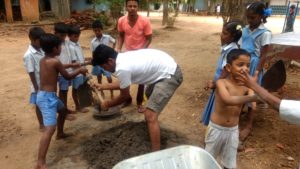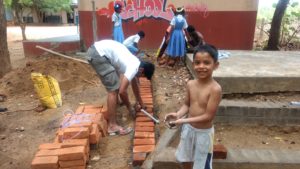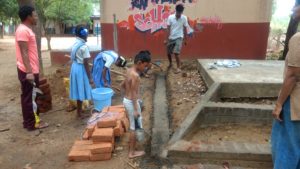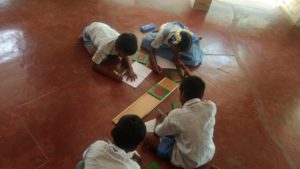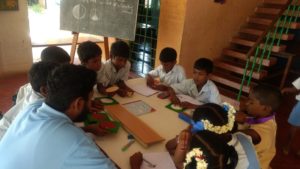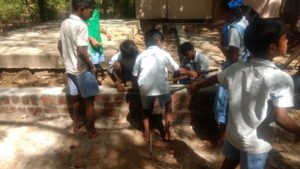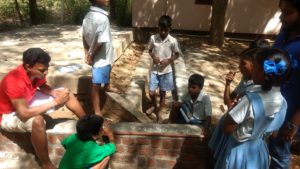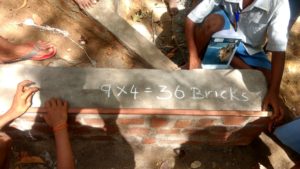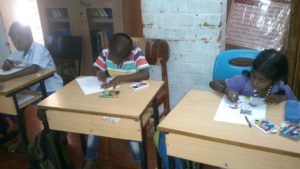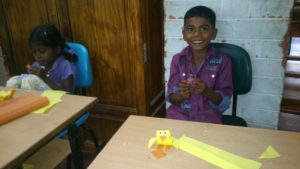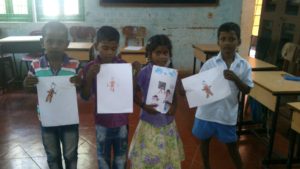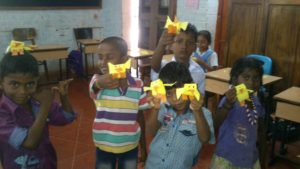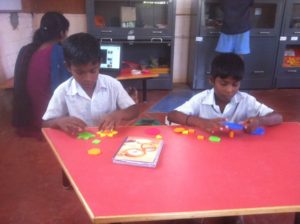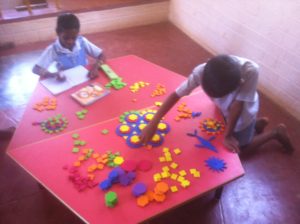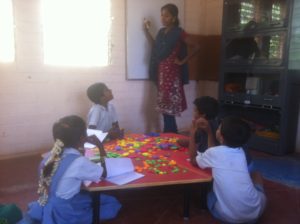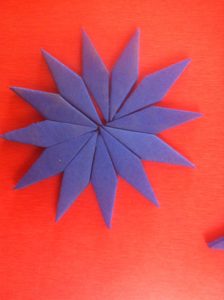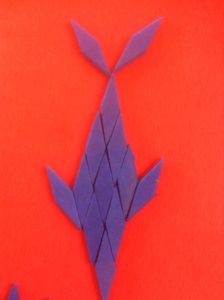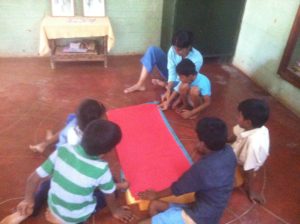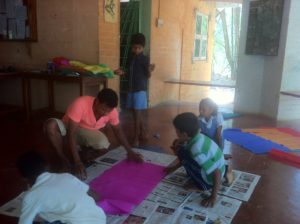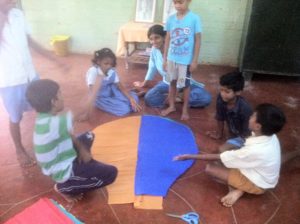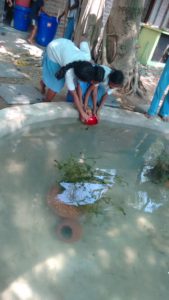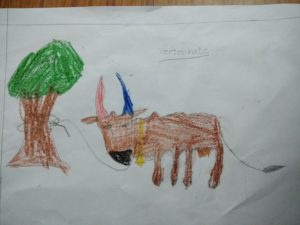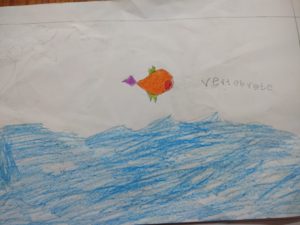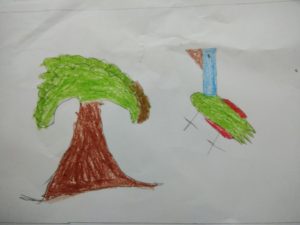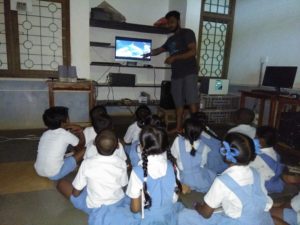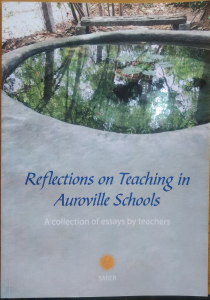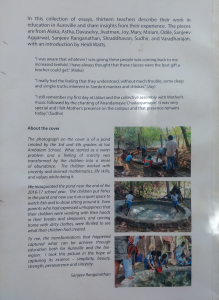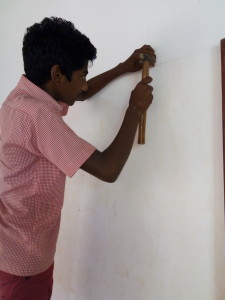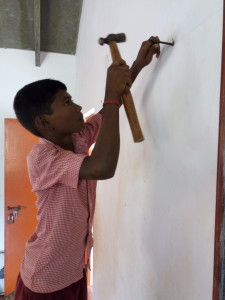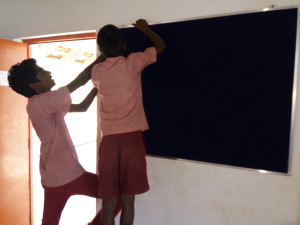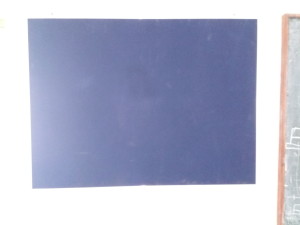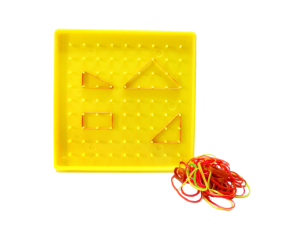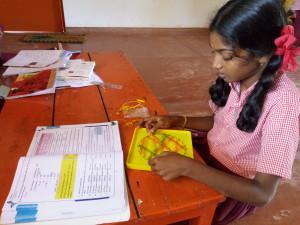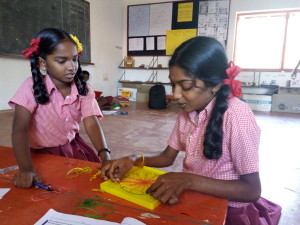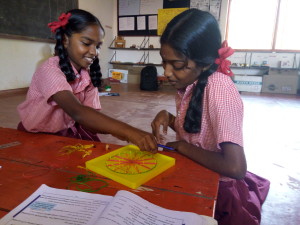Kishor: I learned how to measure the width of tree using thread. We measured the length of the thread using a scale of 15cm. There was team work and we were able to complete the work in time. We measured using creepers as we didn’t have any material in the beginning.
Praveen: I learned to measure width of 5 trees and compared which tree is big, small etc.. We measured the perimeter of the first building.
Guru: I learned to measure length and breadth of the kitchen using thread.
Monika: I learned to measure the width of the tree.
Sharani: I learned how to measure the length and breadth of Anitha’s house and learned to measure the width of the tree in cms
Ajay: I learned to measure the length and breadth of the prayer hall.
Pratap: I learned that our school has trees that have a circumference more than 350cm. The Gaya trees are big and there is a rain tree (Sirish / thoonga munji maram). I noticed that children don’t need to be given certain fixed instruments for measurement. They were able to find innovative ways to measure.
The first time we measured, it took everyone a long time to measure the circumference of a single tree. The next day, we gave the children a challenge to find five big trees. I noticed that they marked the first circumference measurement on the floor with chalk and thereafter, the rest of the measurements were marked in such a manner as to get a relative idea of the circumferences of different trees. The children were quick to note which tree was bigger. It was a satisfying learning and teaching experience for me.


